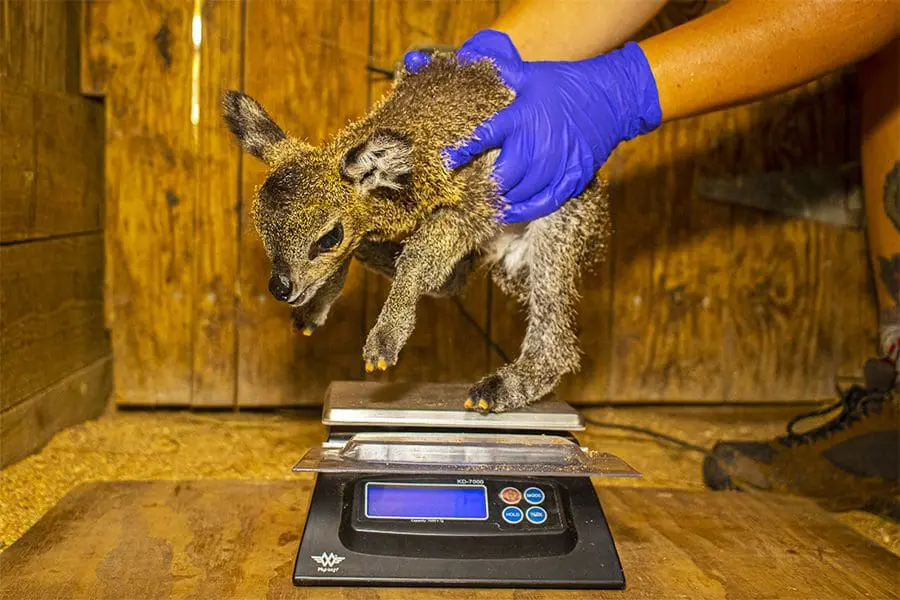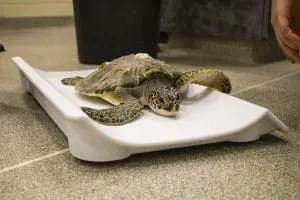

A baby klipspringer is weighed on a small, moveable scale.
Each year, attendees of our Safari Under the Stars gala have the opportunity to rally around a specific Zoo need as part of the Give From the Heart appeal. In the past, these projects have included creating our Exceptional Nature Space, expanding our jaguar habitat, building a home for rescued Florida black bears, establishing a breeding space for endangered Florida grasshopper sparrows and, most recently, installing cameras in our animal habitats.
This year, we’re asking for your help to purchase and replace scales to weigh our Zoo residents.

Patients at our Sea Turtle Healing Center are weighed to determine their diet, medication and fluid amounts.
Why is weighing an animal so important? “An animal’s weight can tell us so much about what is going on as they cannot verbalize how they are feeling,” said Lauren Hinson, the Zoo’s Director of Animal Programs. A weight change can indicate to our animal care team that something may be wrong and help catch medical issues as early as possible. “It can also help detect pregnancy, determine diet increases or decreases and ensure medications are properly dosed according to size.”
Getting weights can be a big to-do when you have to measure more than 900 individuals ranging from grams to thousands of pounds. Among our array of scales are a few permanent versions, a large moveable option shared by multiple species, and an assortment of smaller models. Many have suffered wear and tear from constant use in addition to being out-of-date. The large moveable scale in particular requires multiple keepers to lug around the Zoo.
“We are in a constant struggle to have enough working scales for all of our animals, yet weights are the first thing we look at when determining an animal’s health,” said Lauren.
What goes into weighing an animal? Often, treats and snacks are used to encourage our larger residents to step onto a scale. For some species, such as giraffes, our keepers work on a training behavior so weights can be done voluntarily. For smaller species (especially more active ones), we often use a container to briefly place the animal in and onto the scale and then zero out that weight. We also modify many of our scales to make them as comfortable as possible. For example, some of our bird scales have perching on them!
Our Give From the Heart goal is to add a variety of large, permanent scales and smaller, moveable scales to the Zoo so our animal care team has a more reliable method of gathering weights on our residents to better their care. Some areas we hope to add new permanent scales include Florida black bear, jaguar, Baird’s tapir, giant river otter, Komodo dragon, bobcat, alligator, giraffe barn and spider monkeys.
Because we need such a wide variety of scales, the price tags vary. A scale for spider monkeys could cost around $500, but the full installation of a scale in the giraffe barn could cost over $20,000. This is where we need your help!
Adding new scales will allow us to improve the care and quality of life that we can provide our residents and make our keepers’ work more efficient. If you’d like to help us invest in scales, click here to make a contribution.
